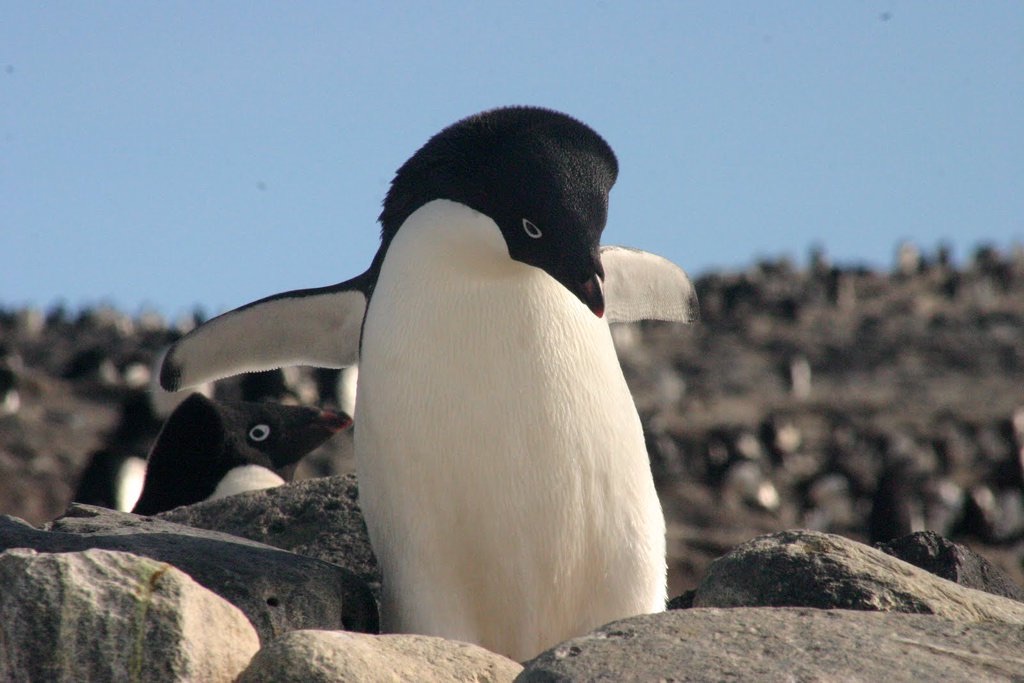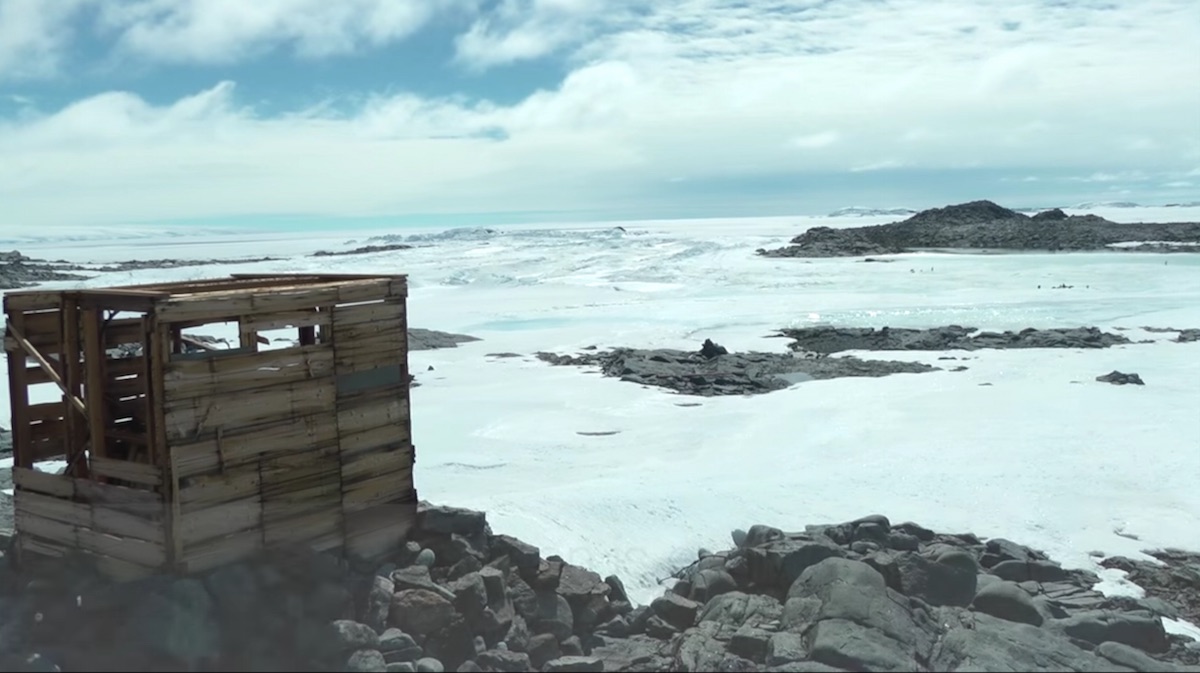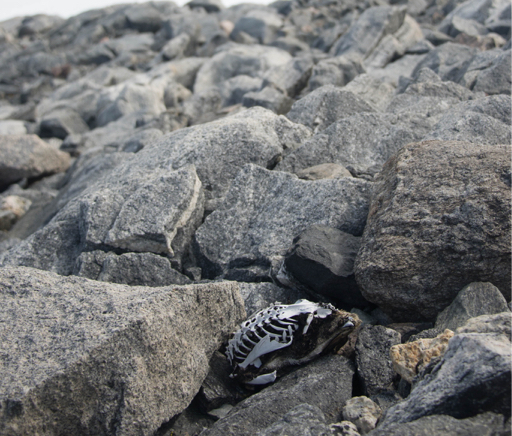Let's All Chill: Antarctica's Adélie Penguins Are Probably Fine

Let's give the penguins a little credit.
The news reported around the world was startling — that some 150,000 Adélie penguins have died in Antarctica because a colossal iceberg cut off their sea access.
But there's no proof yet that the birds are dead. No one has actually found 150,000 frozen penguins. In fact, experts think there's a less horrific explanation for the missing birds: When the fishing gets tough, penguins simply pick up and move. It wouldn't be the first time Adélie penguins marched to new digs. When an iceberg grounded in the southern Ross Sea in 2001, penguins on Ross Island relocated to nearby colonies until the ice broke up. [See Photos of Cape Denison and its Adélie Penguins]
"Just because there are a lot fewer birds observed doesn't automatically mean the ones that were there before have perished," said Michelle LaRue, a penguin population researcher at the University of Minnesota in Minneapolis, who was not involved in the study. "They easily could have moved elsewhere, which would make sense if nearby colonies are thriving," LaRue told Live Science in an email interview.
Where did they go?
The misplaced penguins lived at a colony on Cape Denison in Commonwealth Bay, in East Antarctica. In mid-February 2010, the Rhode Island-sized iceberg B09B crashed into the bay's Mertz Glacier. The stranded iceberg forced the penguins to walk more than 37 miles (60 kilometers) for food, researchers report in a new study. The greater the distance to dinner, the harder it is for baby chicks to get enough calories from their penguin parents. [Infographic: Your Guide to Antarctica]
Since 2011, the original colony of 150,000 penguins has shrunk to around 10,000 birds, according to the new study, published Feb. 2 in the journal Antarctic Science. The authors, from Australia's University of New South Wales, predict the Cape Denison colony will disappear in 20 years unless the ice clears.
Get the world’s most fascinating discoveries delivered straight to your inbox.
"I don't think any of us anticipated what we saw: the ground was littered with dead chicks and discarded eggs. What had been until recently a noisy, raucous colony was now eerily quiet. It was heartbreaking to visit," study co-author Chris Turney, of the University of New South Wales Australia, told Live Science in an email interview.
But LaRue counters that Adélie penguin colonies always have dead birds scattered around because the carcasses don't decompose in Antarctica's dry, cold climate. Researchers have discovered mummified penguins and seals that are centuries old.
"I do not know what happened to these birds, but no one does for certain," LaRue said. "The fact that so many birds [are] gone from this location is really interesting."
The Australian research team also suggests the Cape Denison penguins could have emigrated to other nesting sites. They note that abandoned and recolonized penguin colonies are found throughout Antarctica, evidence of the bird's adaptive response to changing ice conditions in centuries past.
Waddle watch
The Cape Denison Adélie penguin colony was first visited in 1913 during Australian explorer Douglas Mawson's Antarctica expedition. The Australian researchers revisited the colony in 2013, during an expedition to recreate Mawson's voyage. (The year 2013 saw heavy sea ice, and the expedition had to be rescued offshore East Antarctica.)
The researchers thoroughly documented the penguin population during their visit. On the same trip, the research team also discovered thriving Adélie penguin colonies elsewhere in Commonwealth Bay. The finding makes it more plausible that some of the birds affected by the iceberg could have gone elsewhere. However, scientists still know little about how the penguins emigrate between colonies. The Adélie penguin population in Antarctica has only recently become tracked by satellites.
"What's happening in Commonwealth Bay provides a natural experiment of what we might anticipate for the future. I must stress B09B is not thought to be directly the result of climate change, but it does provide an important insight into processes that could operate in a warmer world," Turney said. "We do hope to get back to Cape Denison to continue monitoring the penguins and track what we hope will be a recovery if (or when) the giant iceberg B09B finally moves."
About Adélies
Adélie penguins breed between October and February. Adélie penguins must travel repeatedly from the colonies into the adjacent ocean to find the fish and krill that they eat.
Unlike emperor penguins, which breed on pack ice during the Antarctic winter, Adélie penguins breed during the Antarctic summer (Octover through February) and live on the continent. Adélie penguins travel back and forth from their nesting colonies to the ocean to hunt for fish and krill.
The arrival of B09B has prevented sea ice from leaving the bay, forcing the penguins to walk farther for food. As a result, the penguin population has experienced an order of magnitude collapse in numbers, Turney said.
While the Adélie population has dropped along the Antarctic Peninsula, the colonies in East Antarctica are growing, LaRue said. As of 2011, there were approximately 7 million Adélie penguins in Antarctica. "Losing 150,000 birds — even if that were true — is hardly apocalyptic," LaRue said.
Editor's Note: This article was updated with quotes from one of the study researchers, Chris Turney.
Follow us @livescience, Facebook & Google+. Original article on Live Science.





